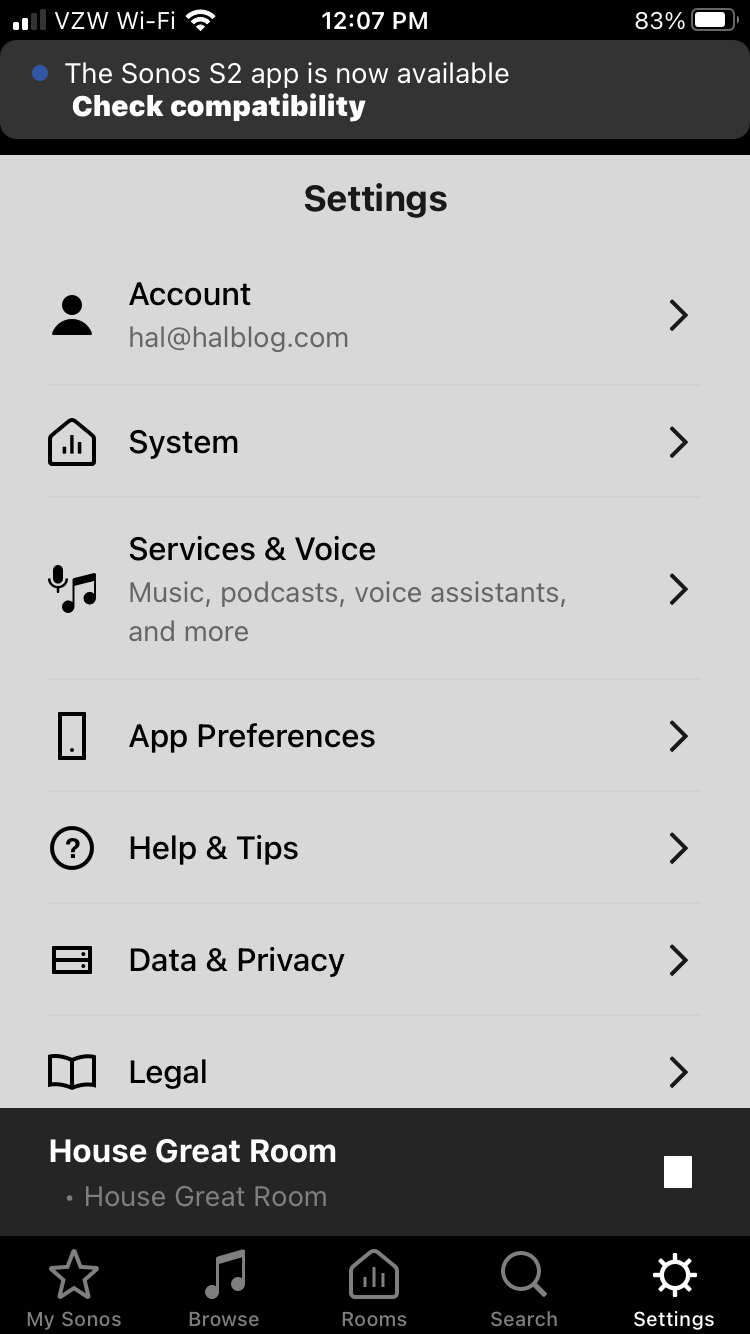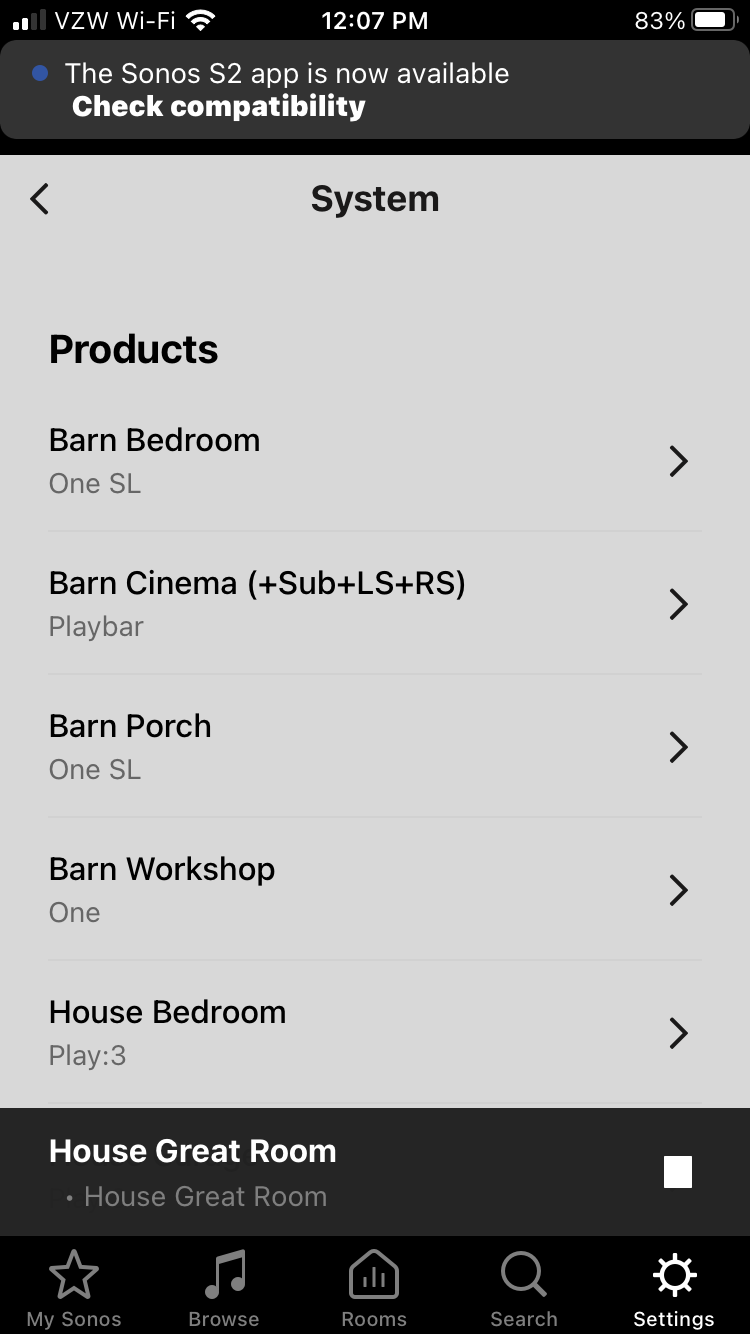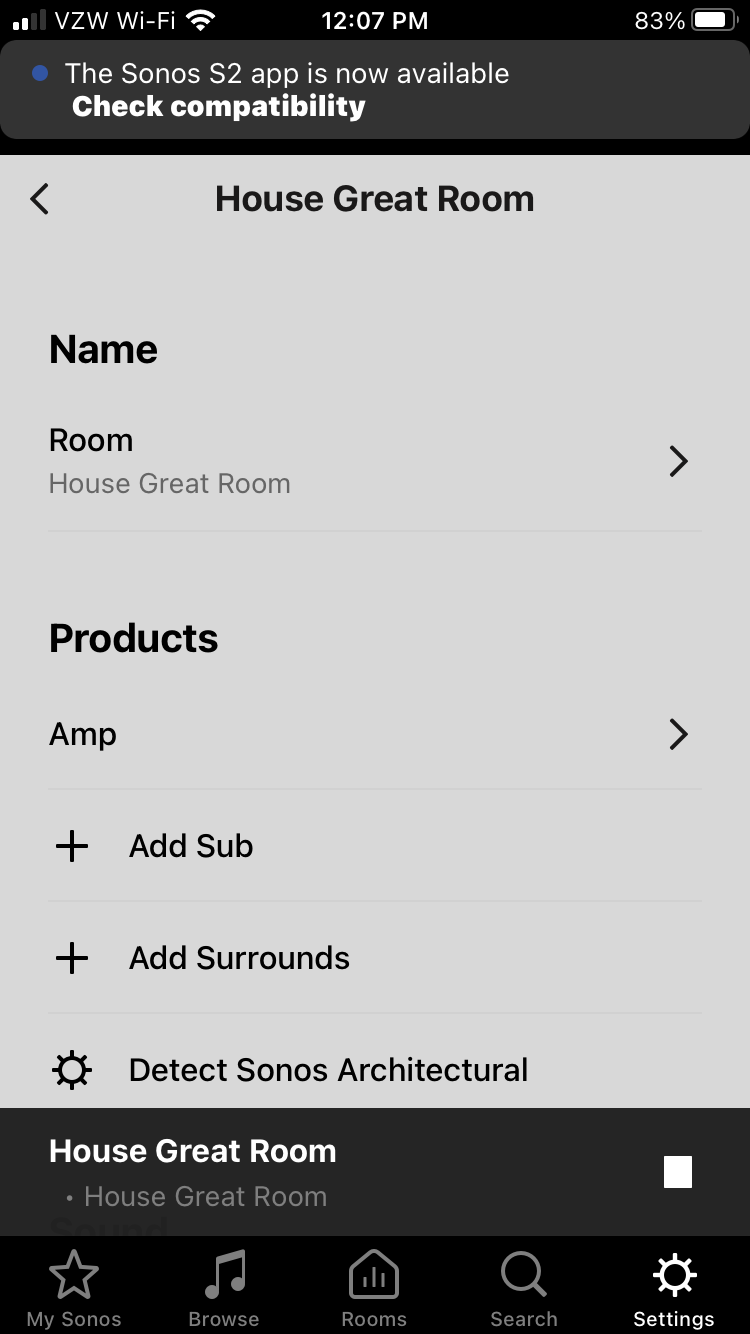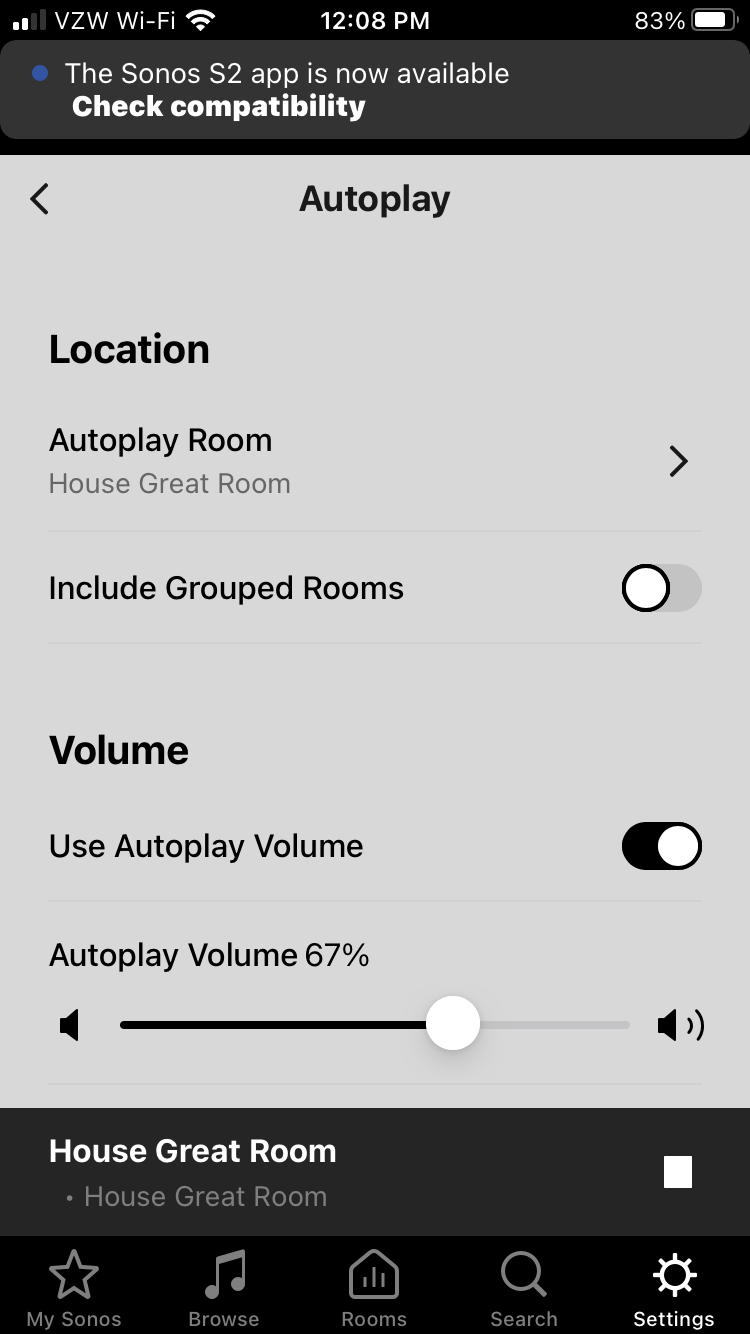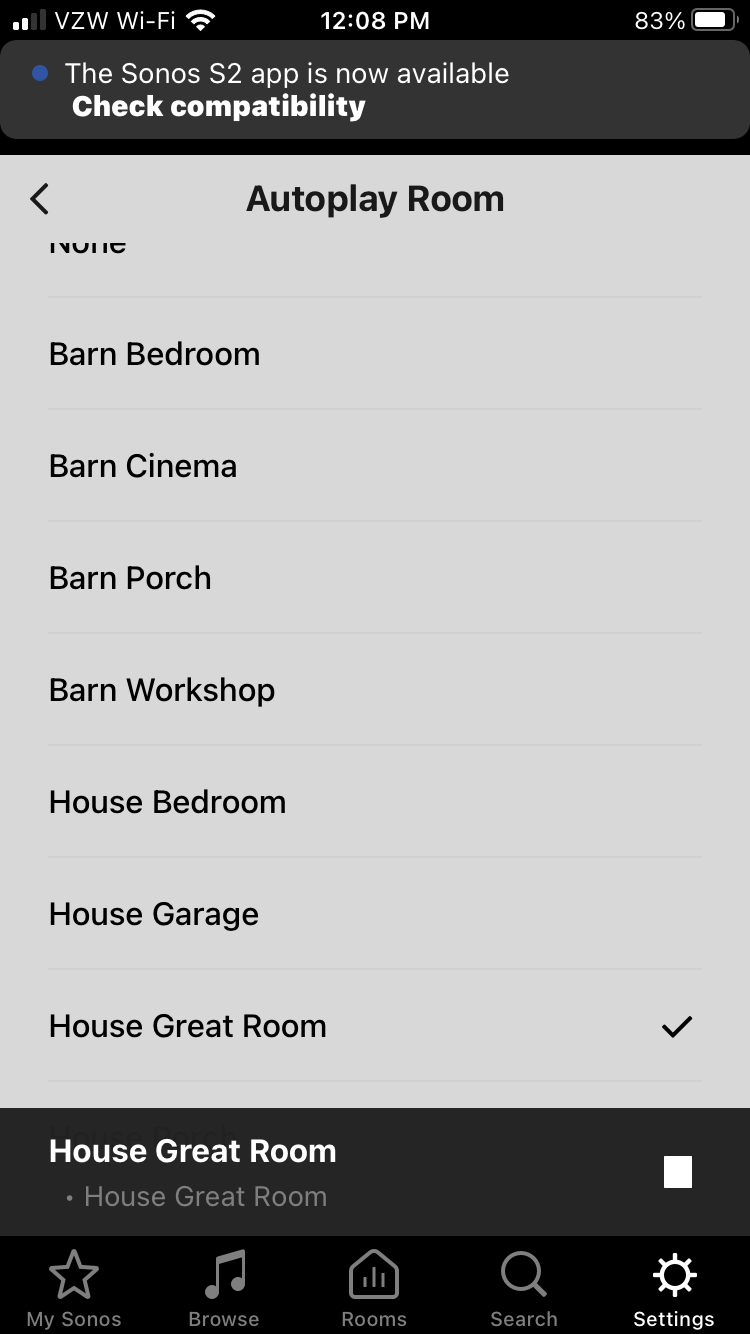I have an Amp hooked up to our living room TV in our house. (I also have a home theater setup using Sonos in our barn/guest house with the big screen TV.) I’m really fed up with the Amp, after any blackout or power flicker, losing all settings. I’ve been using regular stereo audio input pulled from an HDMI switcher to feed the Amp. Whenever we get a power flicker, my Sonos devices lose their groupings and settings. (Which, really, is pretty sad considering that pretty much any device, in 2021, can save such settings in non-volatile RAM - except the high priced Sonos!)
Every time we start up the TV and there’s been a power flicker (which we often don’t know has happened), we get silence. So, instead of using my IR all-in-one remote, I have to pull out my phone and run the Sonos controller and change the Amp input BACK to “Line In,” where I always leave it. What’s amazing (and sad) is that this system is on a UPS. Everything on that UPS keeps behaving normally during an outage or power flicker, but the Amp still loses it’s input setting. (We have a full house generator - if power is totally out, within 40 seconds the generator kicks in and restores power. With a UPS and the generator, this Amp is never without power - yet it’s so sensitive that after a power flicker, it loses settings!)
So, first, it’s really small of Sonos to not have a way to store a setting like that.
Second is a bigger issue. I took the output from the HDMI switcher and ran it into a splitter so I could run one HDMI cable to the projection TV and one to the Sonos Amp. Simple solution, right?
Nope. Then Sonos says, “No arc, gotta fix it.” I’m using equipment that supposedly uses ARC, but I don’t see why it’s needed, since the audio comes from my Apple TV and my Sony BD player. All Sonos has to do is read the audio signal off the HDMI cable.
I want to eliminate this continual pain in the rear. My wife hates, and I mean HATES having to change the Sonos Amp inputs if she wants to watch TV by herself whenever this has happened. I find it an annoyance that, on any kind of up-to-date system in 2021, shouldn’t exist.
I would like to be able to do one of the following, in order of preference:
- Just hook the HDMI cable from the HDMI splitter to the Amp and not have to deal with ARC and just use the normal audio from the Apple TV or Sony BD player. Both output audio on HDMI, so sound coming back from the TV is really not a problem.
- Keep the “Line In” setting all the time, so it’s not lost every time there’s a power flicker or outage.



